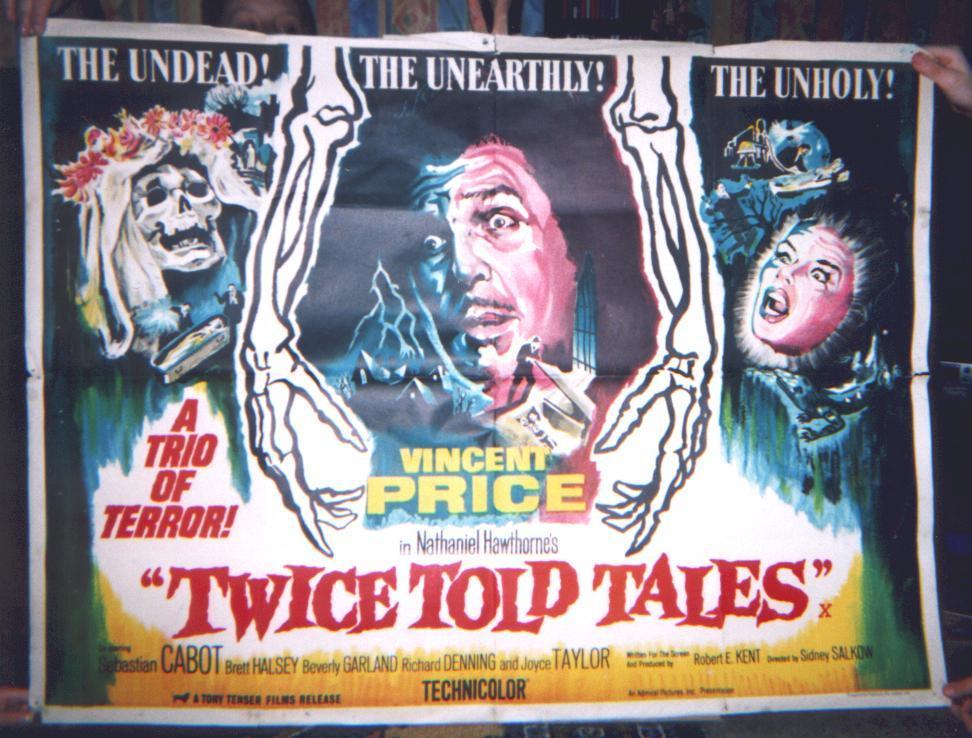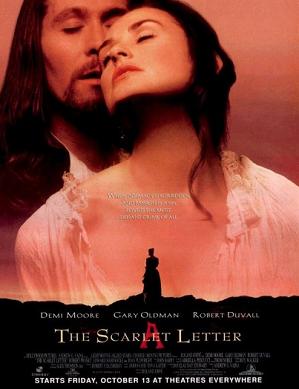|
Craig White's authors |
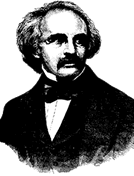 |
Nathaniel Hawthorne (1804-64) life & style |
 |
Contemporary Portraits of Hawthorne,
regarded as one of
the handsomest men in New England,
whose coloring might suggest a
Byronic hero
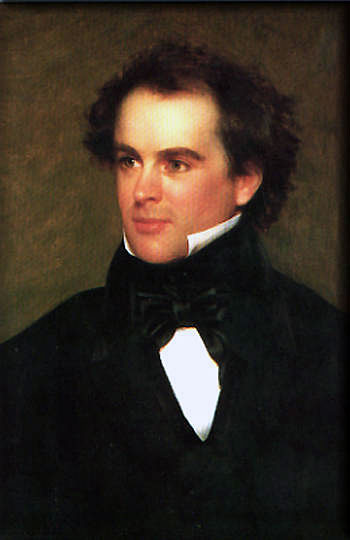 |
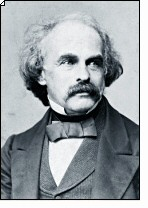 |
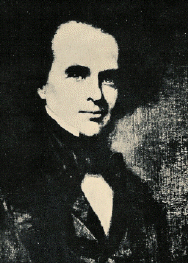 |
Hawthorne's life
1804 Born on 4th of July to a family with deep roots in Puritan New England.
1808 Hawthorne's father, a sea captain, dies of yellow fever in Suriname (Northern coast of South America)
1808-1820s Hawthorne lives in Salem MA with mother and sister in genteel poverty, assisted by family connections
1825 Hawthorne graduates from Bowdoin College in Maine; a classmate was future American poet Henry Wadsworth Longfellow (1807-1882), and his roommate was future U.S. President Franklin Pierce (1804-69; U.S. President 1853-57)
1830s Hawthorne publishes his first short stories in magazines; these stories were later collected as Twice-Told Tales (1837)
1839-40 Hawthorne works as officer in the U.S. Customs House in Boston
1841 Hawthorne lives and works briefly at Brook Farm, a Transcendentalist commune in East Roxbury, MA (near Boston).
1842 Hawthorne marries Sophia Peabody of another old Puritan family that was active in publishing and social movements including Transcendentalism; the Hawthorne family (eventually 3 children) lived in Salem, Concord, and Lenox, Massachusetts
1846-48 Hawthorne employed as "Surveyor for the District of Salem and Beverly and Inspector of the Revenue for the Port of Salem"
1850-52 Hawthorne publishes three novels in attempt to support his growing family:
-
The Scarlet Letter (1850)
-
The House of the Seven Gables (1851)
-
The Blithedale Romance (1852; based partly on Brook Farm commune)
(Especially The Scarlet Letter earned great critical acclaim, but none of the novels sold well enough to support his family. Hawthorne also published short stories in magazines and collections as well as children's literature.)
1852 Hawthorne writes campaign biography for old college roommate Franklin Pierce, who is elected U.S. President (1853-57)
1853 Hawthorne is appointed U.S. Consul to Liverpool, England (a diplomatic post ranking just under "Ambassador"); the Hawthorne family travels through Europe, esp. Italy
1860 Hawthorne family returns to Concord, MA
1860 Hawthorne publishes final novel, The Marble Faun, depicting the American community in Rome
1861 Hawthorne visits Washington, DC; meets Abraham Lincoln. (description of Abraham Lincoln from Chiefly of War-Matters, 1862)
1864 Hawthorne dies; manuscripts of several novels left incomplete at death
![]()
Hawthorne as classic and / or popular author
Hawthorne was never an especially popular writer with big sales. He worked so long on this fiction as to limit his productivity (which popular artists have to maintain), and his fiction's serious mood and moral complexity could not appeal to a wide audience that expected sensational action and push-button sentimentality. His writings were widely reviewed, though, and in 1850 The Scarlet Letter became a minor sensation among intelligentsia and literati as an American novel whose seriousness of subject and quality of style ranked with the best of European authors. He maintained his publishing career as a "prestige author" whose profile attracted other good work to his publisher (in this case, his friend William Ticknor).
Hawthorne's greatest claim to a popular style is his use of the gothic, which always appeals reflexively to a wide audience. During the early-60s parade of Poe-inspired movies, a Hollywood film appeared titled Twice-Told Tales and featuring Vincent Price, who acted in many Poe movies:
|
|
1995 film of The Scarlet Letter
|
Hawthorne's use of the gothic is less sensational than Poe's, more subtle and delicate—no blood! His most evident gothic characteristics—past sin and its consequences, light and dark as good and evil—are used not for sensation but to represent and explore complex moral and psychological states of mind and society.
Instead of being a popular writer, Hawthorne was recognized as a classic author from the start and has thus endured for generations of American students, who sometimes find in Hawthorne a classic writer whose techniques and moral complexity are interesting and compelling to the extent that they gain confidence in exploring other classic authors.
Hawthorne's writings fulfill several qualities often associated with classic rather than popular authors:
![]() delicacy & discernment of
style: Hawthorne
worked hard and long on his writings. Every word, image, or symbol is
coordinated with others.
delicacy & discernment of
style: Hawthorne
worked hard and long on his writings. Every word, image, or symbol is
coordinated with others.
![]() morality instead of moralism: instead of
starkly dividing good and bad (as moralism does), Hawthorne tragically and
ironically demonstrates how the painful intertwining of right and wrong
in individual and social lives defines humanity.
morality instead of moralism: instead of
starkly dividing good and bad (as moralism does), Hawthorne tragically and
ironically demonstrates how the painful intertwining of right and wrong
in individual and social lives defines humanity.
![]() In
the greatest authors, these two aspects of
style—subject matter
and technique—parallel, combine, or fuse. Thus, for instance, Hawthorne's content
of mixed right and wrong takes form in his visual
imagery of blended dark &
light and shifting viewpoints or uncertain perceptions.
In
the greatest authors, these two aspects of
style—subject matter
and technique—parallel, combine, or fuse. Thus, for instance, Hawthorne's content
of mixed right and wrong takes form in his visual
imagery of blended dark &
light and shifting viewpoints or uncertain perceptions.
![]()
Hawthorne as gothic
- some typical gothic materials, but
treated lightly, quickly, or subtly compared to Poe
- gothic as light and dark = states of mind
as in Poe, "correspondence" implied between outward physical world and inner psychological or moral world
- light and dark as "shades of
gray" (gothic color code)
-
intrusion of red, pink, scarlet colors (the "scarlet letter"; Faith's ribbon in "Young Goodman Brown")
-
Rendering of Puritans (two centuries earlier) as ambiguous gothic forms blending light and dark, good and evil
Hawthorne's other characteristic style-elements
Subject matter
Influence of Puritanism (Reformed or Calvinist Protestantism) in New England: "Original Sin," vanity of human wishes or desires
transience, impermanence of truth, beauty--appears always "on the wing" (cf. Emily Dickinson, Melville, Wallace Stevens
- Scarlet Letter: momentary beauty when Hester & Dimmesdale meet in the woods
- "Black Veil" "A sad smile gleamed faintly from beneath the black veil, and flickered about his mouth, glimmering as he disappeared."
Acknowledgement of human sinfulness, frailty, failure > human unity, fellowship; humility as unifying force (Recognizable in Christianity and other world religions)
- Scarlet Letter: Hester's humility makes the "A" stand for "Angel"
-
"Black Veil":
"Each member of the congregation, the most innocent
girl, and the man of hardened breast . . .
Its gloom, indeed, enabled him to sympathize with all dark affections."
Vanity, pride, certainty as divisive, arrogant, controlling of others rather than sharing with others
- Scarlet Letter: Dimmesdale's suffering becomes selfish, self-aggrandizing; Chillingworth's sense of being wronged leads him to manipulate Dimmesdale for sake of vengeance
- "Black Veil" love could never reach him (cf. Young Goodman Brown)
Gender: vain, delusionary, obstinate men; sensible, flexible women who resist categories, fantasies
- Scarlet Letter: Hester & Dimmesdale
-
"Black Veil"
[Elizabeth] entered upon the subject, with a direct simplicity . . . .
And with this gentle, but unconquerable obstinacy, did he resist all her entreaties
No simple, final conclusion or "moral" to dilemmas; ambiguity of moral judgments as shades of gray
Human consciousness as complex, flawed, adventurous but failing--cf. Henry James
Stylistic techniques
symbols foregrounded, must be interpreted (but act of interpretation never completed; symbols must)
-
"Black Veil"
"symbol of a fearful secret"
"this veil is a type and a symbol"
"only a material emblem had separated him from happiness"
"by the aid of this mysterious emblem . . . ."
correspondence between interior and exterior
-
"Black Veil"
dimmed the light of the candles
the Earth, too, had on her Black Veil
shifting viewpoint
truth as evanescent, ephemeral, transient, elusive: "flickering," "glimmering"
-
"Black Veil" A sad smile gleamed faintly from beneath the black veil, and flickered about his mouth, glimmering as he disappeared.
glimmered faintly
qualifiers—may
have, could have
"something"--Hawthorne leaves a void that reader participates in filling
-
"Black Veil" . . . there was something, either in the sentiment of the discourse itself, or in the imagination of the auditors, which made it greatly the most powerful effort that they had ever heard from their pastor's lips.
2203 What, but the mystery . . has made this piece of crape so awful -
cf. Poe, "Ligeia" : "What was it--that something . . . which lay far within the pupils of my beloved? What was it? . . . we often find ourselves on the very verge of remembering
-
anticipates Whitman in "Crossing Brooklyn Ferry": "What is it then between us?"
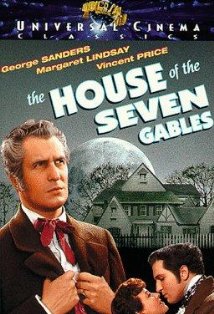 1940 |
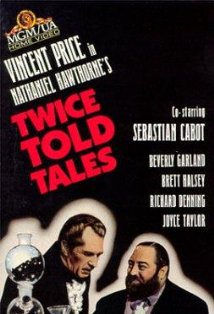 1963 |
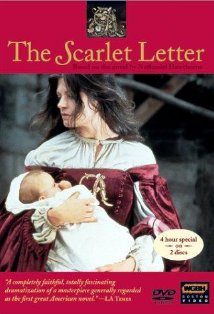 1979 |
 1995 |
